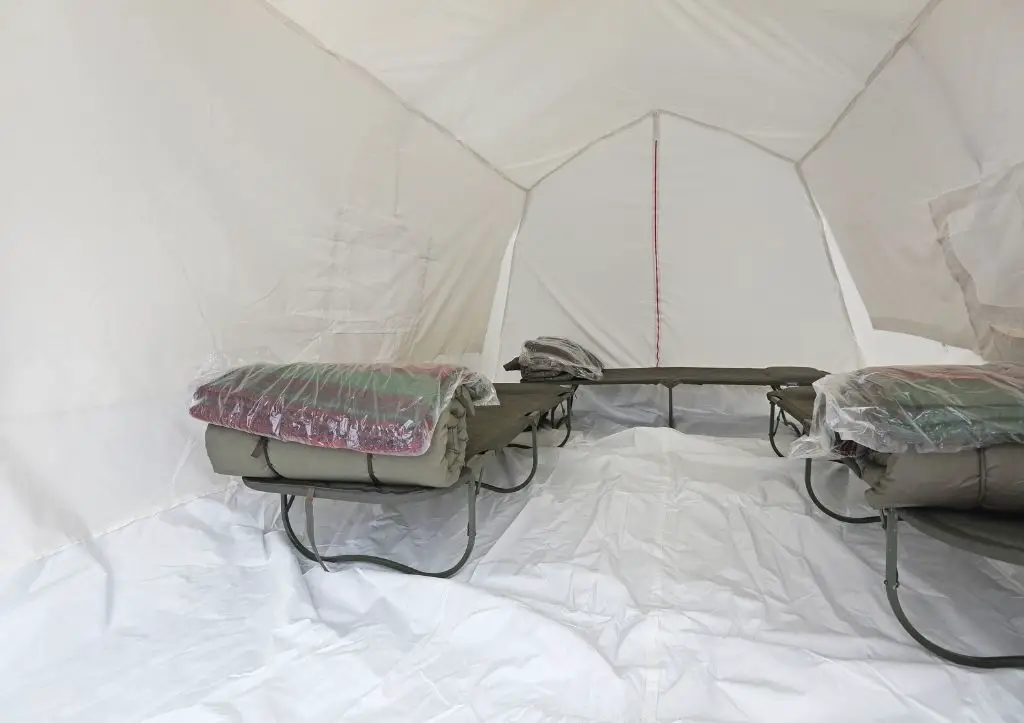No one wants to sleep in a wet sleeping bag.
But, it can happen. If you’re camping in humid weather or near a water source, your bedding is bound to get at least a little bit damp.
Here are some tips to help keep your sleeping bag and other bedding dry when camping.
The most common causes of wet bedding while camping are a leaky tent and condensation. Make sure that your tent is watertight and use a waterproof groundsheet. Ensure adequate ventilation to reduce the levels of condensation inside the tent.
Table of Contents
Why does bedding get damp inside a tent?
The tent is leaking and rainwater is finding it’s way inside the tent, making the bedding wet.
Condensation forming on the walls and inside of the tent can result in damp bedding ( and other things ).
When the temperature falls outside the interior of the tent will remain slighter warmer ( due to the occupants, heaters, lights etc ).
If the tent is poorly ventilated, then the interior will become humid causing condensation to form inside the tent.
How to stop my bedding getting wet inside a tent?
To stop your bedding from getting wet there are a few things you can do:
Make sure your tent is waterproof. Use a good quality tent and check it for leaks before you go on your trip.
Use a waterproof groundsheet to further protect your bedding from getting wet.
Ensure adequate ventilation in your tent. This will help reduce the amount of condensation that forms inside.
Pack all of your belongings in waterproof bags. This will help to keep them dry if your tent does leak.
If it looks like rain, set up your tent in a sheltered spot. This will help to protect it from the elements.
Make sure you have a good sleeping bag. A synthetic or down filled sleeping bag will insulate you better than a cotton one and will be less likely to get wet.
If your sleeping bag does get wet, make sure you dry it out as soon as possible. A wet sleeping bag can lead to hypothermia.

What can I do to stop my bedding from getting damp from condensation?
There are a few things you can do to reduce the amount of condensation that forms inside your tent:
Make sure the interior of your tent is clean and free of any dirt or mud. This will help the fabric breath better
Avoid cooking inside the tent. The fumes from cooking can cause condensation to form
Pack all of your belongings as tightly together as possible. This will help to reduce the amount of cold air that comes into contact with the tent walls
If possible, try and camp in a dry location. A campsite that is sheltered from the wind and has good drainage will help to reduce the amount of condensation that forms
Make sure you have adequate ventilation in your tent. This can be achieved by opening the doors and windows or by using a fan.
If possible, try and camp in a location where there are trees or other vegetation. This will help to absorb some of the moisture in the air
Use a dehumidifier to manage condensation levels
Using a dehumidifier can help to reduce the levels of condensation inside your tent.
You can purchase re-chargeable dehumidifiers cheaply from places such as Amazon, they charge up via mains electricity and can then be used, without any power supply, inside your tent.
Most are small, portable and not much larger than a small purse.
The added advantage is that you can use them at home, in your car and elsewhere when you are not camping.
Keep wet gear outside the tent
If you have wet coats, boots or other items then you should store them outside the tent – either in a vehicle, hung up somewhere or elsewhere.
If you bring damp or wet items into the tent then you increase the moisture levels inside which will then impact the air dampness and condensation risks.
Heated Tent – Use a heater inside your tent
If you use a heater inside your tent then this will help to reduce the amount of condensation that forms.
The warmth from the heater will help to dry out the air and stop condensation from forming.
But, this will only work if you make sure that the tent is ventilated so that damp and warm air can escape before it has a chance to condense on interior surfaces.
Use a fan to circulate the air
If you use a fan inside your tent then this will also help to circulate the air and stop condensation from forming.
The fan will help to move the air around and will help to disperse any moisture that may be in the air.
This will help to keep your bedding and belongings dry.
Final words
A little bit of preparation and common sense can go a long way in helping to keep your bedding dry while camping.
If you remember that most dampness is caused by condensation and poor ventilation then you will be able to take the right steps to prevent your bedding from becoming damp.




